Monday 28 August 2017
14:00 Opening Remarks
Prof. Mamoru Suzuki
President of Tokyo Medical University
Session I
Chair: Prof. Junko H. Ohyashiki
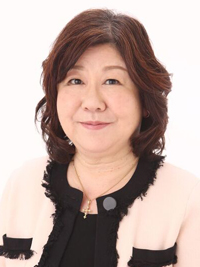
Junko studied her M.D. at Tokyo Medical University in 1972-1978, followed by her PhD at Tokyo Medical University, Tokyo Japan. In 1984-1986 she was a Research fellow at the Department of Genetics and Endocrinology, Roswell Park Memorial lnstitute, Buffalo, NY, USA, In 1987-2003, she was an Assistant Professor at Department of Haematology, Tokyo Medical University. In 2003-2008 she was an Associate Professor at Intractable Disease Research Center, Tokyo Medical University, Since 2009 she has been a professor at the Department of Molecular Oncology, institute of Medical Science, Tokyo Medical University.
She has a variety of awards including Medical Award of the Tokyo Medical Association, Award of Japan Medical Woman`s Association, and Research Grant, Foundation for promotion of Cancer Research. Her interests lie in non-coding RNA in cancer and the role of telomeres and telomerase in cancer and aging.
14:10 miRNA in aging and cancer
Prof. Hidetoshi Tahara
Institute of Biomedical & Health Sciences, Basic Life Sciences, Hiroshima University
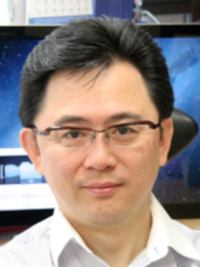
Department of Cellular and Molecular Biology, Graduate School of Biomedical Science Hiroshima University, 1-2-3, Kasumi, Minami-ku, Hiroshima, 734-8553, Japan.
[1985-1989]
Tokyo University of Pharmacy and Life Sciences
[1989-1994]
Graduate School of Medical and Pharmaceutical Science, Hiroshima University
[1994]
Awarded the degree of Doctor of Philosophy in Pharmaceutical Science (Ph.D.)
[1994-2001]
Research associate, Department of Cellular and Molecular Biology, Faculty of Medicine, Institute of Pharmaceutical Sciences, Hiroshima University
[1998-2000]
Visiting Fellow, Laboratory of Molecular Carcinogenesis (Dr. J Carl Barrett), National Institute of Environmental HealthSciences, National Institute of Health (NIH), North Carolina, U.S.A.
[2001-2005]
Associate Professor, Department of Cellular and Molecular Biology, Faculty of Medicine, Institute of Pharmaceutical Sciences, Hiroshima University
[2006-present]
Professor, Department of Cellular and Molecular Biology, Basic Life Science, Institute of Biomedical & Health Sciences,, Hiroshima University
[2016-present]
Head, Basic Life Science, Institute of Biomedical & Health Sciences, Hiroshima University
[2008-present]
President, Japanese Association for RNA interferences (JARI)
[2012-2017]
Executive Committee, International Society for Extracellular Vesicles (ISEV)
Specialty: microRNA, telomere, senescence and cancer
【ABSTRACT】
Cellular senescence is an important mechanism of tumor suppression. Disruption of the senescence program by epigenetic alterations in cancer may promote tumor formation in vivo. We recently showed that senescent associated miRNAs, SA-miRNAs, involved in the regulation of the senescence program in both normal and cancer cells, and play a major role of tumor suppression [1]. By screening of screened senescent associated miRNAs using microRNAs library and high contents analyzer, we identified putative several novel SA-miRNAs that significantly inhibit cancer cells. Among them, Four SA-microRNAs (miR-Xs) are significantly repress cell growth in several cancers including breast, pancreatic, colon, mesothelioma, and head and neck cancers. Cancer stem cell and drug resistant cancer cells are major concern for cancer treatments. Interestingly, we identified miR-Xs as a strongest SA-miRNA which induce apoptosis in CD44+ MDA-MB-231 cancer stem cell enriched breast cancer cell line. In addition, miR-X also inhibits cell growth in anti-cancer drug resistant cells. These results showed that SA-miR-Xs act as tumor suppressor in both cancer stem and anti-cancer resistant cells. Extracellular vesicles (EVs) such as exosome-like vesicles, which are 50–100nm in size and carry and microRNAs and specific protein, also secrete from mammalian cells. We will present biomarker to detect early cancer cells using NGS.
[1] Xu D, Takeshita F, Hino Y, Fukunaga S, Kudo Y, Tamaki A, Matsunaga J, Takahashi R, Takata T, Shimamoto A, Ochiya T, and Tahara H. miR-22 represses cancer progression by inducing cellular senescence. The Journal of Cell Biology, 193 (2) 409-442, 2011
14:40 Dendritic cell-derived exosomes as Immunotherapy
Dr. Masakatsu Takanashi
Department of Molecular Pathology, Tokyo Medical University
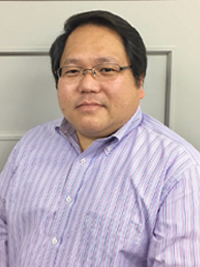
Dr. Masakatsu Takanashi is a Lecture at Department Molecular Pathology, Tokyo Medical University. He received B.S. from the Tokyo University of Science. And then he obtained a Ph.D. from Tokyo Medical and Dental University. After graduate, he was a research associate at the school of Medicine, Teikyo University, and then was a research associate at Center of Tsukuba Advanced Research Alliance, University of Tsukuba. His research focuses on tumor immunology that tumor cell-derived exosomes suppress functions of immune cells and how dendritic cell-derived exosomes can mediate and regulate immune responses against tumors.
【ABSTRACT】
Immunotherapy is expected as the fourth cancer therapy subsequently to the three pillars of cancer treatment which are surgery, radiation, and chemotherapy. Cancer immunotherapy enhances existing antitumor responses and includes the use of antibodies, lymphocytes, and cytokines. Dendritic cells (DCs)-based immunotherapy is one of the cancer immunotherapies. Because DCs play a key role in immune reactions to activate T cells against cancer cells by cancer antigen presentation at cellular membrane, DCs have been used in clinical trials as cellular mediators for therapeutic vaccination of patients with cancer. The cells such as DCs and cancer cells secrete exosomes which are nano-sized extracellular microvesicles. It has reported that the exosomes released from peptide-vaccinated DCs are responsible for the persistence of antigen presentation. On the other hands, cancer cells derived exosomes play an immunosuppressive. So, we considered that whether DCs-derived exosomes could induce suppress cancer cells and more effective response of immune system against cancer with control for the cancer cell-derived exosomes. Luciferase gene transfferd-3LL cells (murine lung cancer cell line derived C57BL/6) were injected to C57BL/6J mice by intraperitoneal administration. And then, DCs, DCs-exosomes or 3LL-exosmes were weekly administrated to lung cancer bearing mice. The exosomes derived from DCs decreased lung cancer cell growth, on the other hand, lung cancer derived-exosomes increased in compared with DCs, DCs-exosomes and non-treated. For cancer immunotherapy, DC-exosomes and controlled cancer-exosomes play important roles. Currently, we are going on analyze immunosuppressive molecules possessing cancer cell-derived exosomes, and immune activation molecules in DCs-exosomes.
15:00 Cross-talk mediated by bone marrow stromal cell-derived extracellular vesicles
Dr. Tomohiro Umezu
Department of Hematology, Tokyo Medical University
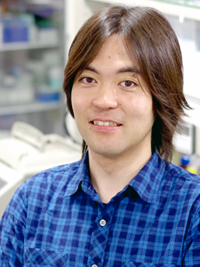
Dr. Tomohiro Umezu received a B.E. degree and Ph.D. in engineering from Tokyo University of Sciences in 1999 and 2004, respectively. In 2004, he became a research associate at the Department of Biological Science and Technology, Tokyo University of Sciences. Five years later, he moved to the laboratory of Professor Junko Ohyashiki at Tokyo Medical University as a postdoctoral fellow. He studied tumor cell-cell communication via extracellular vesicles (EVs) in the bone marrow microenvironment, and discovered that EVs secreted by multiple myeloma cells under chronic hypoxia enhance angiogenesis. He became a research associate in 2011 and lecturer at the Department of Hematology, Tokyo Medical University in 2014, where he continues to study non-coding miRNAs and EVs in the tumor microenvironment. He has received a Grant-in-Aid for Scientific Research from JSPS for 2015–2017, and research grants from Kobayashi Foundation for Cancer Research (2015) and The Tokyo Biochemical Research Foundation (2016).
【ABSTRACT】
Evidence suggests that bone marrow stromal cells (BMSCs) derived from healthy donors are one of the most promising cell sources for cellular therapies. Recently, extracellular vesicles (EVs) derived from normal BMSCs have been found to be efficacious for the treatment of graft-versus-host disease. However, the biological properties of EVs derived from BMSCs, such as the effect of aging, are largely unknown. We hypothesized that the therapeutic potential of normal BMSC-EVs may largely depend on donor age, possibly due to the differences in their contents (mRNAs, miRNAs, and proteins). To test this hypothesis, we investigated donor age-related differences and therapeutic effects of BMSC-EVs using in vivo Matrigel plug assays. BMSC-EVs derived from young healthy donors (young BMSC-EVs) significantly inhibited tumor-induced angiogenesis. Of note is that the anti-angiogenic effect of older BMSC-EVs was restored by direct transfection of miRNAs specific to young BMSC-EVs. Our results shed light on possible effects of EV-based therapy by EV engineering.
In contrast to normal BMSCs with therapeutic effects, BMSCs derived from multiple myeloma (MM) patients interact with MM cells in bone marrow where MM-BMSCs create a permissive microenvironment for MM cell growth and survival. We have therefore focused on the biological properties of EVs and EV-miRNAs derived from MM-BMSCs. This talk will discuss the functional differences of BMSC-EVs between healthy subjects and MM patients in addition to the changes in EV contents by aging to establish emerging strategies that target the MM microenvironment to prevent disease development.
15:20 Clinical application of mesenchymal stromal cells (Kintaro cells™)
Mr. Alexei Gladkov
Kintaro Cells Power Corp., Tokyo, Japan

Mr. Alexei Gladkov is a president of Kintaro Cells Power, Co., Ltd., Tokyo, Japan, Founder, Owner, President.
He obtained his master degree in the Novosibirsk State University in 1989, and his specialty was philosophy and Japanese. He received an invitation to graduate the Academy of Sciences in Russia. He studied his master of business administration in high school of economy of Russian government, Moscow in 2002 (his specialty: strategic management). He has Experience in different fields like tourism, trading, internet, software, medical tourism, bio-researches. He was always on actual frontier of world future trends.
He was a founder of East Point Eleven Co. Ltd.”, Tokyo, Japan, in 2002-2007 (Export and logistic service, Soft wear development). In 2007-2011, he was a founder and president of “I-C-I-D, Pte. Ltd. (Singapore)”, and working on medical tourism, destination management, and stem cells research. Since 2012 he has been a founder, owner, and president of “Kintaro Cells Power Co.,Ltd.”, Tokyo, Japan. He has been engaged in international research collaboration regarding regenerative and cellular medicine development in Japan and South-East Asia.
He has been contributing a variety of Japan-Russia relations, including Japanese-Russia Friendship Association in Tokyo, and Russian Business Association in Japan.
URL: https://kintarocells.com/en
【ABSTRACT】
Cellular Medicine is a new approach to increasing the quantity and quality of some adult stem cells in the human body. "Kintaro Cells" (TM registered) are bone marrow derived mesenchymal stromal Cells, separated and cultivated by original technology developed in Soviet Union and patented in Japan by Kintaro Cells Power Japan Corporation. It is a type of adult progenitor cells with low immune-genic profile, which allowed use allogeneic donor`s cells.
A Soviet Scientist, Alexander Fridenstein discovered these types of cells in 1969. Later, a team of Soviet researchers led by Professor Konoplyannikov (Obninsk Medical radiation Research Institute) continued to study these cells over the past 45 years. This team has created original technology of cultivation based on a natural method of separation and step-by-step cleaning and separation. After few years of pre-clinical animal trials, this Russian team started human medical application of the BM-MSCs in 2001. They preformed a series of Clinical trials and individual cases for heart diseases, Crone disease, lung diseases and brain trauma.
Now "Kintaro Cells Power Corp." in collaboration with Medical Research Center of Russian Federal Agency of Medicine Development (Moscow) has organized several modern Clinical trials for Diabetes and pulmonary fibrosis. These Clinical Trials follow modern international standards and have been officially registered in clinical trial government.
While we were developing a further understanding of the medical possibilities of BM-MSC, these cells were simultaneously being developed for commercial use in Russia starting from first official license in 2004.
We created brand name "KINTARO CELLS" and is currently in use in our sales through our chain of branches across Vietnam, Thailand, Malaysia, Indonesia and Cambodia. We have provided more than 700 commercial KINTARO CELLS treatments worldwide mostly for general prevention of disease and anti-aging purposes.
In this symposium, we will present some results of clinical trial in Russia, and propose possible clinical application of the Kintaro cells.
Session II
Chair: Prof. Hirotaka Nishi
Department of Obstetrics and Gynecology, Tokyo Medical University
16:10 Advances in cancer immunotherapy
Prof. Takayuki Yoshimoto
Department of Immunoregulation, Institute of Medical Science, Tokyo Medical University
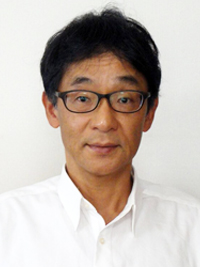
Dr. Takayuki Yoshimoto is a professor of Department of Immunoregulation, Institute of Medical Science, Tokyo Medical University. He received his Ph.D. from Laboratory of Biological Chemistry, Tokyo Institute of Technology. After broadening his research expertise as a postdoctoral fellow at Department of Pathology, New York University Medical Center, for 3 years, he became an assistant professor at Department of Allergology, Institute of Medical Science, University of Tokyo. Seven years later he moved to Tokyo Medical University as an associate professor, and 8 years later he was appointed to his current position. Throughout his career, he has been investigating the regulation of biological responses by cytokines, especially, the IL-6/IL-12 family cytokines in the field of immunology, oncology, and stem cell biology aiming at their clinical applications as well as elucidation of basic biology.
【ABSTRACT】
Cancer immunotherapy has come into the spotlight as one of the most promising new treatments that harnesses powers of the immune system; sipuleucel-T and ipilimumab were recently approved by the US FDA for patients with cancer. Sipuleucel-T is a therapeutic vaccine using DCs stimulated by a tumor-specific antigen combined with GM-CSF. Ipilimumab is an inhibitory monoclonal antibody specific to one of the immune checkpoints, CTLA-4. Currently, various other immunotherapeutic strategies including opdivo and CAR-T to overcome tumor immune evasion and enhance antitumor immunity are also undergoing investigation. IL-27, a member of the IL-12 heterodimeric cytokine family, has pleiotropic functions in the regulation of immune responses with both pro-inflammatory and anti-inflammatory properties. Numbers of evidence obtained by using a variety of preclinical mouse models indicates that IL-27 possesses potent antitumor activity against various types of tumors through multiple mechanisms without apparent adverse effects. These mechanisms include those mediated not only by CD8+ T cells, NK cells, and macrophages but also by antibody-dependent cell-mediated cytotoxicity, antiangiogenesis, direct antiproliferative effect, inhibition of expression of cyclooxygenase-2 and prostaglandin E2, and suppression of epithelial–mesenchymal transition, depending on the characteristics of individual tumors. Recently, we have also elucidated that IL-27 exerts antitumor activity via a novel mechanism, namely, in tumor-bearing mice IL-27 promotes the differentiation of hematopoietic stem cells into myeloid progenitor cells, which have enhanced potential to differentiate into antitumorigenic M1 macrophages. Here, we introduce the potent antitumor effects of IL-27, and discuss the potential clinical application of IL-27 as an antitumor agent.
16:30 Hypoxia induced paclitaxel resistance via miR-100 as a potential diagnostic biomarker for cervical cancer
Prof. Hirotaka Nishi
Department of Obstetrics and Gynecology, Tokyo Medical University
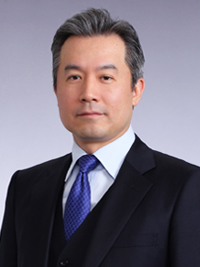
Work Experience
[2017-]
Chairman and Professor, Department of Obstetrics and Gynecology, Tokyo Medical University
[2002-2017]
Senior Lecturer, Department of Obstetrics and Gynecology, Tokyo Medical University
[2001-2002]
Assistant Professor, Department of Obstetrics and Gynecology, Tokyo Medical University
[1999-2001]
Visiting Fellow, Laboratory of Molecular Biology, National Cancer Institute, National Institutes of Health, USA
[1998-1999]
Assistant Professor, Department of Obstetrics and Gynecology, Tokyo Medical University
Education
[1999]
Ph.D., Department of Obstetrics and Gynecology, Tokyo Medical University
[1994]
M.D., Tokyo Medical University
【ABSTRACT】
Objectives: MiR-100 is associated with cell proliferation and apoptosis, decreased in cervical cancer. Hypoxia occurs during development of cervical cancer and correlates with its resistance to chemotherapy. We found that hypoxia induced miR-100 and sought to determine the regulators of the paclitaxel response during hypoxia in cervical cancer. Methods and Results: We extracted total RNA from serum in 46 cervical cancer patients (CC), 64 cervical intraepitherial neoplasm patients (CIN) and 34 normal controls, after informed consent was obtained. The expression level of miR-100 was investigated in each sample using quantitative real-time RT-PCR. We examined correlations among the expression of miR-100, clinicopathological factors and prognosis. The relative level of miR-100 in serum was significantly lower in the CC. The level of miR-100 in the lymph node metastasis positive was significantly lower than that in the negative group. Also, cervical cancer patients with lower miR-100 tended to poor prognosis. Next, we found that the expression of miR-100 was significantly higher under hypoxic condition (1% O2) by realtime RT-PCR in cervical cancer cell lines, SiHa and HeLa. According to the results of in silico analysis, miR-100 targeted human ubiquitin-specific protease (USP) 15. Hypoxia and overexpression of miR-100 respectively decreased the activity of luciferase-reporter containing the 3'-untranslated region (UTR) of USP15 with the predicted miR-100-binding site. By western blot analysis, hypoxia reduced the endogenous USP15 protein expression. Overexpression of miR-100 induced paclitaxel resistance reducing dead cells using MTT assays. Conclusions: MiR-100 in serum can be used as a marker in prediction of lymph node metastasis and prognosis. Also, our results provide evidence that regulation of USP15 expression by miR-100 represents a mechanism for paclitaxel resistance in cervical cancer. MiR-100 and USP15 could be a therapeutic target in paclitaxel-resistant cervical cancer.
16:50 G-quadruplexes in cancer biology and therapeutics
Dr. Hiroyuki Seimiya
Division of Molecular Biotherapy, Cancer Chemotherapy Center, Japanese Foundation for Cancer Research
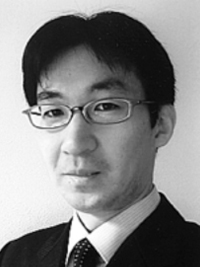
Dr. Seimiya received his bachelor’s degree in 1990 and Ph.D. in pharmaceutical sciences in 1995 from the University of Tokyo. He became a research associate at Japanese Foundation for Cancer Research (JFCR) in 1995, and joined Susan Smith lab in New York University in 2000. He returned to JFCR in 2001 and became principal investigator in 2005. He received JSPS Predoctoral Special Fellowship (1993), NCI-JFCR Scientist Exchange Program Fellowship (2000), Incitement Award of Japanese Cancer Association (JCA) (2004), JCA-Mauvernay Award (2016), and Takashi Tsuruo Award (2017). As concurrent positions, he has been visiting professor in Meiji Pharmaceutical University, University of Tokushima, Yokohama City University, Hiroshima University, visiting associate professor in the University of Tokyo and technical committee member of Pharmaceuticals and Medical Devices Agency (PMDA). His main field of interest is molecular cancer medicine, focusing on telomeres, G-quadruplexes, PARPs and cancer stem cells.
【ABSTRACT】
G-quadruplex (G4) is a non-canonical three-dimensional structure formed in guanine-rich nucleic acids. G4 is supposed to affect various cellular events, such as DNA replication, transcription and translation, whereas G4 stabilization by chemical compounds has been implicated for cancer intervention. Telomeric DNA and its transcript, called TERRA, contain the G4-forming TTAGGG and UUAGGG repeats, respectively, suggesting functional involvement of G4 in telomere biology. While telomere erosion by the end replication problem causes cell mortality, telomere elongation by telomerase confers cell immortality. Interestingly, cancer cells often keep their telomeres shorter than those of surrounding normal tissues. We demonstrate that telomere elongation in cancer cells represses the expression of cancer-associated innate immune genes and promotes their differentiation in vivo. We found that telomere elongation leads to higher levels of TERRA signals, which in turn repress the innate immune gene expression. This appeared to occur from the action of G4 in TERRA. We speculate that G4 may counteract cancer malignancy through transcriptional regulation of specific genes. Meanwhile, we have developed chemical compounds, called G4 ligands, which stabilize G4 and elicit anticancer efficacy. Among heterogeneous cell population in a tumor, cancer stem cells are supposed to be resistant to chemo/radiotherapy and cause the disease recurrence. We demonstrate that G4 ligands preferentially inhibit the growth of glioma stem cells. These compounds activate DNA damage response on the G4-forming sequences, such those in telomeres, and inhibit intracranial growth of glioma stem cells. These observations suggest that G4 stabilization is a promising approach to attack glioblastoma.
17:20 Recent advance of telomere biology in neuroblastoma
Prof. Eiso Hiyama
Department of Pediatric Surgery, Hiroshima University Hospital, Natural Science Center for Basic Research and Development, Hiroshima University, Hiroshima, Japan
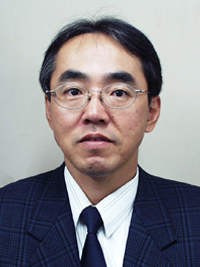
Eiso Hiyama, Surgeon (Ph.D.-medicine), now is a professor of Hiroshima University, head of the Biomedical Science Division, Natural Science for Basic Research and Development, Chief of Pediatric Surgery, Hiroshima University Hospital, Hiroshima University.
Executive Director, Japanese Society of Pediatric Hematology and Oncology Chair, Chair of Liver tumor committee & Co-Chair of Germ Cell Tumor committee, Japan Children’s Cancer Group (JCCG). Executive Board Member, Japan Society of Clinical Oncology, A Council Member, Japanese Cancer Association, A Council Member, Japanese Society of Regenerative Medicine, A Council Member, Japanese Society of Surgery. An Active Member, American Association of Cancer Research. An Active Member, American Society of Clinical Oncology. An International Member, Children’s Oncology Group, International Advisory Board Member, ChiLTERN project
【ABSTRACT】
Neuroblastoma (NBL) shows remarkable biological heterogeneity resulting favorable or unfavorable prognosis. We have reported telomere biology in NBL: unfavorable tumors have acquired immortalization by stabilized telomere while favorable ones are mortal. Therefore, telomerase activation and alternative lengthening of telomere (ALT) due to ATRX/DTXX mutations may be landmarks for aggressive growth in unfavorable tumors, respectively. Recently, genomic rearrangements at 5p15.33 proximal of the telomerase reverse transcriptase gene (TERT) were found in some group of unfavorable NBLs. Therefore, we analyzed alteration of TERT promoter lesion (PL) in our NBL samples using SNP array, next generation sequencing (NGS) or FISH in 146 NBL clinical samples.
In 11 ALT-activated tumors, telomere lengths were elongated (15 - 40 kb) and all had ATRX/DAXX gene alterations but no alteration of TERT-PL was detected. In the 135 remaining cases, telomere length were under 15 kb and high telomerase activity was detected in 63 tumors. Among them, only 3 of 28 MYCN amplified NBLs and 29 of 35 MYCN non-amplified NBLs had alteration of TERT-PL. (P <0.01). The outcome of the cases with high telomerase showed significantly worse than others (P <0.01).
In NBLs, alteration of TERT-PL might activate TERT expression in unfavorable cases without MYCN amplification. As MYCN activates TERT expression, the stabilization of telomere by ALT or high telomerase activity might be directly correlated with unfavorable tumors. Thus, a better understanding of telomere biology and developing of therapeutic strategies for telomere-stable NBLs may help to improve the outcome of NBL patients.
Special Lecture
Chair: Prof. Kazuma Ohyashiki
Chairman and professor of the Department of Hematology, Tokyo Medical University
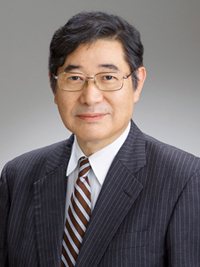
Kazuma Ohyashiki, M.D., Ph.D. is Professor and Chairman of the Department of Hematology, Tokyo Medical University (Shinjuku-ku, Tokyo, Japan). Dr. Ohyashiki received his Ph.D. in cytogenetic in hematology from Tokyo Medical University in 1983, following which he continued his training in clinical hematology at Tokyo Medical University and clinical genetics as a research scientist at the Roswell Park Memorial Institute.
Dr. Ohyashiki focused on cytogenetics in hematologic malignancies and one of the members for International Prognostic Scoring System for myelodysplastic syndromes (in 1997), and he contributes clinical implication of genetic abnormalities in hematologic malignancies, especially in myelodysplastic syndromes and chronic myeloid leukemia. He also interested in molecular cytogenetics, including telomere/telomerase dysfunction in hematologic malignancies.